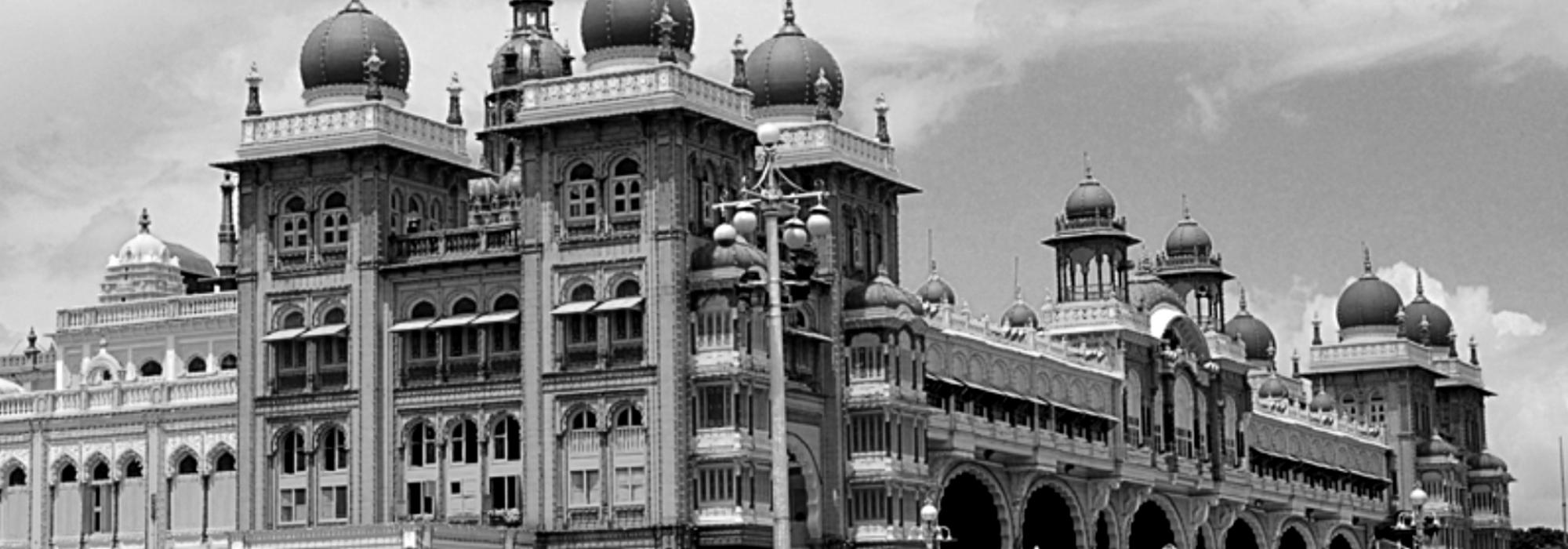Sir Mirza Muhammad Ismail Saheb’s ancestors hailed from Persia. Persia is known as the land of famous poets like Firdausi [Abul-Qāsem Ferdowsi Tusi], Hafiz [Khwāja Shams-ud-Dīn Muḥammad Ḥāfeẓ-e Shīrāzī], Omar Khayyam [Ghiyāth al-Dīn Abū al-Fatḥ ’Umar ibn Ibrāhīm al-Nīsābūrī al-Khayyāmī], Sadi [Abū-Muhammad Muslih al-Dīn bin Abdallāh Shīrāzī]. Persian literature and culture had come to Mirza as a family trait. His ancestors had come to India from Persia as traders.
Ali Askar
Mirza Ismail’s grandfather was Ali Askar Saheb. A street in Bangalore’s cantonment is named after him. He was a contemporary of the chief commissioner, Sir Mark Cubbon. Ali Askar was a horse trader, who imported horses from Arabia and other countries and sold them to the British army and to others. Just as the motor car is important to us today, for those living a hundred or a hundred and fifty years ago, horses were important. In the army, the horse was the most vital constituent.
Thus Ali Askar’s business flourished. He was also into money-lending. Whenever British officers wanted to transfer money they came to Ali Askar and so he was well acquainted with several of them.
Circa 1850, the Mahārāja of Mysore, Krishnaraja Wodeyar III had to seek Ali Askar’s help. The British had taken up the reins of the administration of the Mysore state in 1831. The Mahārāja came up with an action plan to regain control of the administration. In this effort, he needed the support of a few British officers. At that time, Madras was the capital of the British-controlled provinces in South India. The Mahārāja felt that it would be useful to gain the friendship and trust of prominent British officers stationed in Madras. Ali Askar used to travel to Madras and Bombay frequently and he was a person who had benefited from the proximity to many British officers. And so, his assistance became essential to the Mahārāja. Ali Askar was entrusted with the responsibility of ferrying many secrets and classified letters to the officers and back. He took the responsibility and helped the Mahārāja achieve success. This resulted in a strong bond between the family of the Mysore Mahārāja and Ali Askar’s family.
Ali Askar Road
Once Sir Mark Cubbon asked Ali Askar, “There is a lot of space in Bangalore and hardly anyone is building anything. Why don’t you build a house for yourself here?”
Ali Askar replied, “If you give us some space, we shall build a home.”
“As much space as you feel is required, just mark it on the map. Take my word that I’ve already given it to you,” said Cubbon.
And thus, the two rows of houses on either side of Ali Askar road came into being. In addition to that, some houses were also built in Richmond Town. In the nearby ‘Arab Lines’ many of Ali Askar’s relatives have their houses.
So Mirza Ismail’s house in Bangalore is more than a century old!
Mirza’s father Aga Jan was an expert in horses and horse-riding. There was a strong friendship between Chamarajendra Wodeyar X and Aga Jan. They would go horse-riding together.
The friendship between Mirza Ismail and Krishnaraja Wodeyar IV is one that has spanned three generations.
For the early education of Krishnaraja Wodeyar IV a new ‘Royal School’ was established. Children of some of the most prominent citizens of Mysore were chosen as its students. Mirza Saheb was one among them. Others in this clique included M S Ramachandra Rao, B Venkatasubba Rao, Lingopant Badami, and Tippu Sultan Ali Khan – all were classmates of the Mahārāja and more or less of the same age.
The friendship between the Mahārāja and Mirza Ismail started during their student days.
College Education
After completing his education at the Royal School, Mirza Ismail joined the Central College in Bangalore. Many of his classmates and contemporaries later became experts in various fields. One among them was N S Subba Rao who later became the Vice-Chancellor of Mysore University. The eye specialist Dr. B K Narayana Rao was another of his classmates.
In his FA[1] classes, Prof. B Venkatanaranappa and B Venkateshacharya taught physics, C M Vijayaraghavacharya taught chemistry, and V S Sambashiva Iyer taught geology. Mirza Ismail respected them all, fondly remembered them till the end, and whenever possible served them by helping them in issues that came within his powers as Dewan.
Mirza’s elective in BA was geology. He was an intensely devoted student to V S Sambashiva Iyer. Iyer was a patriot and a proponent of the Swadeshi lifestyle. After he retired from his teaching job, Mirza encouraged him to establish an industry that would benefit from his expertise in geology. As a result, a factory manufacturing colors used to coat aluminium was established.
Employment
After completing his education, Mirza Ismail was appointed as a probationer and assigned to the police department.
Mirza apparently started his service in Kolar district. He gained experience under Narayana Rao of Saligrama, who was the Superintendent of Police and they remained friends till the end.
Mirza was in the police department only for a few months. Soon after, he was taken into the private office of the Mahārāja. From there, till he became the Dewan, he remained in the office serving the Mahārāja under various posts: as Assistant Private Secretary, Huzur Secretary, and Private Secretary.
Working in the private office of the Mahārāja for long years, Mirza gained something that no one else could have: the intimate knowledge of the various departments of the government worked. This was the main strength that served him well during his administration as the Dewan of Mysore. He had first-hand experience of the various departments, their working, the nature of the officers, their opinions, and their style of working.
During those days it was mandatory for Mahārāja to have a Secretary of European origin. The European Private Secretary represented the British government.
Footnotes
[1]First examination in Arts (FA).












































